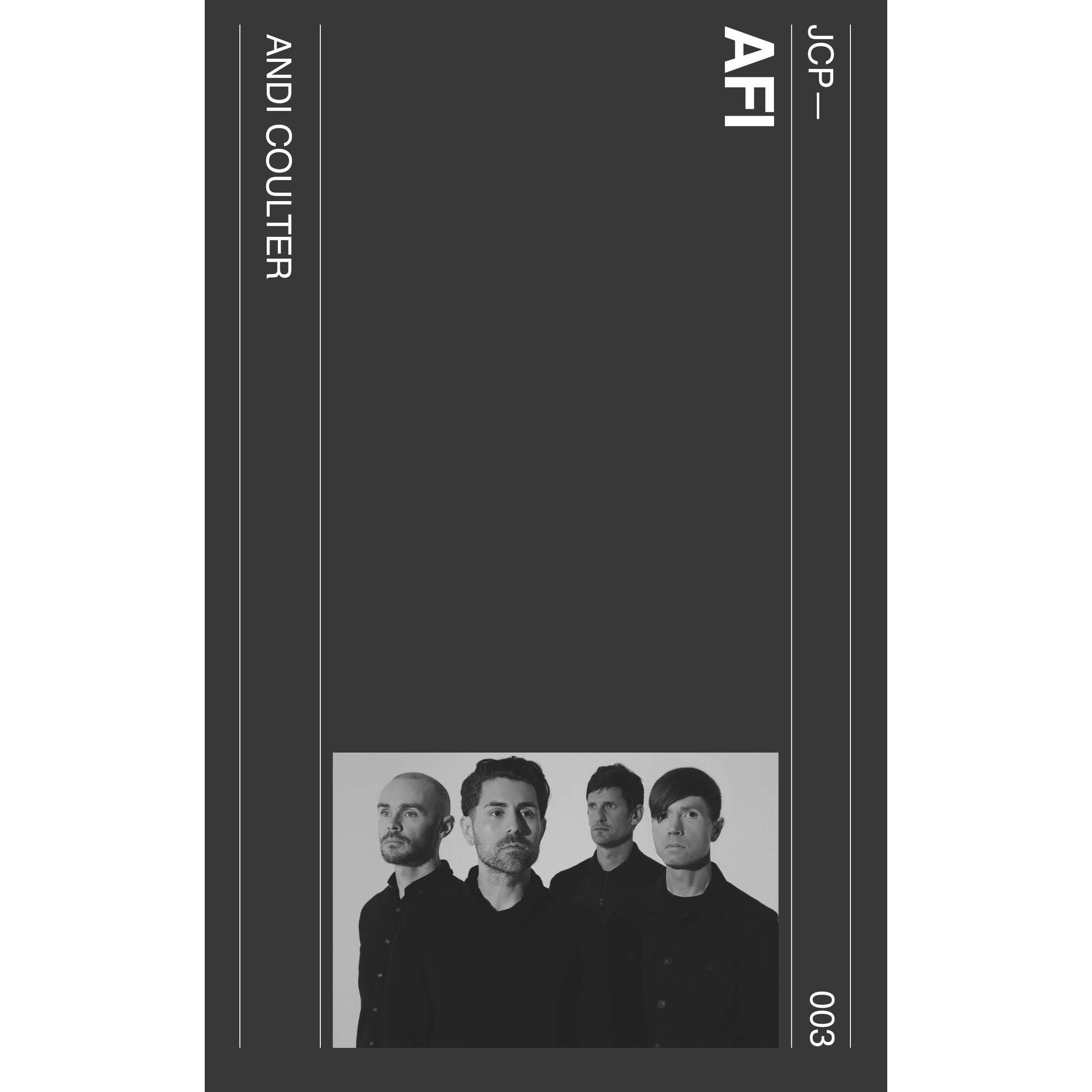
AFI
Huge stylistic changes are usually reserved for pop stars. Few bands have successfully waded into uncharted musical territory, yet AFI managed to take deep genre swings without alienating their fan base. Musical history is littered with the vestiges of bands brought down by their own success, yet AFI has avoided this fate for over thirty years.
From MTV to MySpace, this book explores AFI's groundbreaking role in shaping online fan culture and their journey as musical chameleons. From their humble punk roots to their experimental electronic era, AFI's ability to reinvent themselves while maintaining their artistic integrity is a testament to their enduring influence.
AFI
Huge stylistic changes are usually reserved for pop stars. Few bands have successfully waded into uncharted musical territory, yet AFI managed to take deep genre swings without alienating their fan base. Musical history is littered with the vestiges of bands brought down by their own success, yet AFI has avoided this fate for over thirty years.
From MTV to MySpace, this book explores AFI's groundbreaking role in shaping online fan culture and their journey as musical chameleons. From their humble punk roots to their experimental electronic era, AFI's ability to reinvent themselves while maintaining their artistic integrity is a testament to their enduring influence.

About the author
Andi Coulter spent over twenty years in the live music industry, a decade of which as the Director of Marketing at the 9:30 Club in Washington, D.C. The author of the 33 1/3 book about Suicide’s debut album, she is currently an Assistant Professor of Business Administration at Washington and Lee University. She lives in Charlottesville.
-
Publication date: 12/12/24
ISBN: 979-8-9891947-4-2
Format(s): Paperback, ebook
Pages: 138
Size: 5x8
-
Item de“Being an AFI fan was like being in a club. Not quite horror punk, not quite goth punk, not quite punk punk. No one else was making that sound. There was something magical about what they were doing.”
—David Galloway, Despair Faction member
“AFI has forged a powerful connection with their fanbase, crafting music as a dialogue with both listeners and society. Their enduring career, devoted following, and timeless sound cement their place in music history.”
—Josh Madden, Chief Creative MDDNscription
-
-
From Prelude:
The crowd swells with anticipation. The fully packed Kia Forum in Los Angeles is teaming with black-clad kids of every age. All eyes stare intently at the darkened stage; red lights suddenly illuminate the stairs. The recognizable chant of “Miseria Cantare” begins. Each fan, in unison, mouths the familiar words and shouts the now all-too-familiar lyrical opening of every AFI show for over twenty years. Falling gold leaves appear against the red backdrop like tiny angels descending to the stage. This is reverence. This is faith. You are now—one of us.
On a cool Saturday night in March 2023, AFI played a one-off show celebrating the twentieth anniversary of Sing the Sorrow, the album that broke the Bay Area band into the mainstream. AFI is often a group that many casual music fans lump into the emo revival of the aughts. This show, however, was no night of nostalgia nor an album-in-its-entirety cash grab. The one-night-only West Coast date was a limited-edition live show, the kind that the band has been known for providing their fans for the past three decades.
Sing the Sorrow was the band’s major-label debut after cutting their teeth as a reliable indie act for twelve years. It was also the first album that widened the schism between their longtime hardcore fans and their new punkier converts. While there was no denying that the bigger budget brought the band glossier production, it was almost as though the rift wasn’t about the major-label move as much as it was about the polished melody and visible theatrics. Specifically, the video for “Girl’s Not Grey” had lead singer Davey Havok ditching his trademark Misfit devilock for Peter Steele’s long black tresses. In fact, Havok, who had always had an interest in aesthetics, started to look conventionally pretty just as the sound of the band started to become more commercially palatable. Punks started feeling that these hardcore kids were glittering up the gutter.
AFI has been a band for almost thirty years. They still tour constantly, selling out theaters, and put out new music. Why did AFI succeed when so many other bands fail? Certainly, their career has ebbed and flowed, yet as all the members approach fifty, they still put on the same intense live show they did in their twenties. In many ways, AFI is the musical inheritor of an eighties indie band DIY blueprint, having created the band in high school, put out their own seven-inches, and booked their own shows. AFI had been a band for a decade before inking a larger record deal, and their DIY business acumen served them well at a time when many of their peers had major-label horror stories.
AFI weathered all these storms and is still playing large shows to this day. They came up in the East Bay punk scene, even at one time being second only to Fugazi for most in attendance at 924 Gilman Street. And yet, few people will name-check AFI when associating bands with the legendary club. Similarly, they were part of the third wave of emo bands in the aughts, such as My Chemical Romance and Fall Out Boy, that leveraged their fan base through early Myspace social media. In fact, in 2005, Myspace named AFI the biggest band on the platform. They were also part of the must-see MTV Total Request Live explosion with videos for “Girl’s Not Grey” and “Miss Murder.” Yet again, they have gone under the radar when considering the music from this time. Why does the reclamation of emo not include AFI? Why are they often an asterisk to the East Bay DIY punk story of the Gilman Street scene? Why are they not part of the label sweep of punk bands between 1993 and 2007? AFI seems always adjacent to the discourse. I think their continued exclusion from music journalism is partially responsible for their durability. AFI’s inclusionary ethos—be it music, politics, or image—makes them an anathema to rockism and populism narratives.
How does a band that is a part of numerous historical narratives somehow get left out of musical retellings? And how does a hardcore band out of the Bay Area sustain a successful thirty-year music career while constantly evolving their sound? The answer to both questions is the same. Beyond the inability to pin AFI down to any one genre or sound is something that is culturally deeper. There’s always been an aesthetic to the band that tends to divide fans and critics alike. And yet, it is the fluidity of their aesthetic that is key to their longevity.
A musical bridge is a unique part of a song that ties two seemingly disparate parts together. Often, a musical bridge connects what came before with what comes after, breaking up a song's predictability. Sometimes, a musical bridge is a mini-detour akin to following the white rabbit down an unknown hole. This book examines the musical bridges AFI has created for twenty years, examining times when they moved away from punk predictability and veered down the rabbit hole. AFI’s sonic experimentation is always part of a bridge from their past into their present. There’s always connective tissue to what they do, even if it isn’t always obvious to the casual observer. This book looks at the role both AFI’s fans and early social media had in helping the band sustain a long career; by doing so, it aims to serve as a bridge between the band and their fans, showing how AFI’s music allowed a space to deepen one’s sense of belonging and remind people they are part of something greater than themselves. Ultimately, this book is for anyone who knows what it is like to find your band, to find your home within a musical community, and to find your place in the world.





